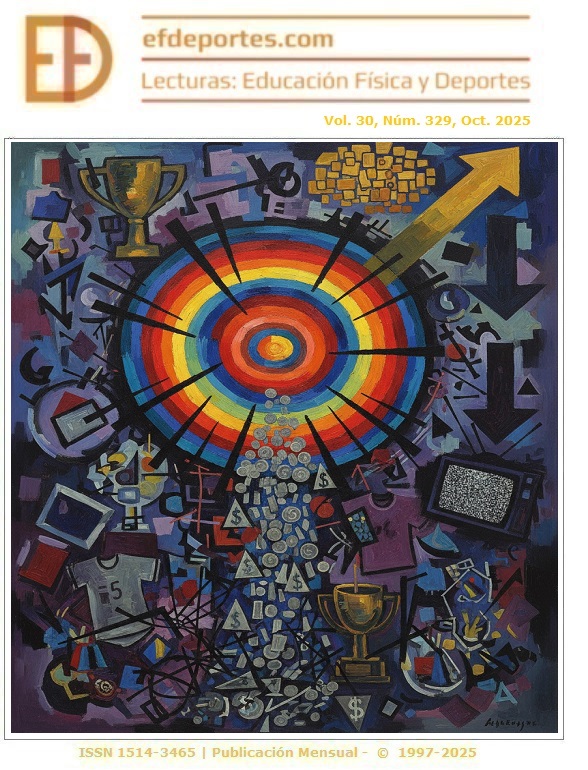The Howard Gardner's Theory of Multiple Intelligences, Implications for Education and Learning
Abstract
This literature review article explores the Theory of Multiple Intelligences proposed by Howard Gardner, which suggests that intelligence is not a single, general ability, but rather a set of distinct cognitive skills. Gardner initially identified seven types of intelligence: linguistic, logical-mathematical, musical, spatial, bodily-kinesthetic, interpersonal, and intrapersonal, later adding naturalistic intelligence. This perspective has had a significant impact on the field of education, as it offers a broader view of human potential and challenges traditional teaching models focused solely on conventional academic abilities. The objective of this article is to analyze how this theory has been applied in educational contexts, what benefits have been reported, and what its main criticisms are. The review of various sources reveals that many educators have adopted this approach to design more inclusive pedagogical strategies that cater to individual learning styles, thereby promoting a more equitable and participatory education. However, the limitations of the theory are also discussed, including the lack of conclusive empirical evidence supporting the existence of independent intelligences in a neurological sense. Despite this, the theory of multiple intelligences remains an important reference point for curriculum design and educational innovation, as it emphasizes the value of recognizing and nurturing the diversity of student abilities in the classroom.
References
Armstrong, T. (2009). Multiple intelligences in the classroom (3rd ed.). ASCD. https://doi.org/10.1002/9780470373693
Ávila Matamoros, A.M. (2014). Inteligencias múltiples: Una aproximación a la teoría de Howard Gardner. Horizontes pedagógicos, 1(1). https://horizontespedagogicos.ibero.edu.co/article/view/467
De La Cruz Medina, S. (2022). Inteligencias múltiples en la educación universitaria: un enfoque innovador. LATAM Revista Latinoamericana de Ciencias Sociales y Humanidades, 6(1), 1-11. https://doi.org/10.56712/latam.v6i1.3390
Gardner, H. (1983). Frames of mind: The theory of multiple intelligences. Basic Books. https://doi.org/10.1037/10123-000
Gardner, H. (1999). Intelligence reframed: Multiple intelligences for the 21st century. Basic Books. https://doi.org/10.1002/9780470373693
Gardner, H. (2007). Five minds for the future. Harvard Business School Press.
Herrera, R.M.S. (2024). CLIL Methodology as an Educational Approach to Support Productive Skills for EFL. Lecturas: Educación Física y Deportes, 29(311). https://doi.org/10.46642/efd.v29i311.7266
Kornhaber, M.L. (2004). Multiple intelligences: From the ivory tower to the dusty classroom but why? Teachers College Record, 106(1), 67-76. https://doi.org/10.1111/j.1467-9620.2004.00319.x
Marín, M.R. (2010). Inteligencias múltiples y educación física: La práctica de actividad física y deportiva también desarrolla la inteligencia. Lecturas: Educación Física y Deportes, 138. https://www.efdeportes.com/efd138/inteligencias-multiples-y-educacion-fisica.htm
Matos, N.B., y Zanotello, M. (2023). A Teoria das Inteligências Múltiplas e o processo de ensino-aprendizagem na educação básica: uma análise bibliográfica do período 2010-2020. Educação: Teoria e Prática, 34(67), e17. https://doi.org/10.18675/1981-8106.v34.n.67.s17498
Melo, P.L. de. (2021). As inteligências múltiplas como teoria necessária nas escolas para formação integral dos educandos: uma proposição a partir de estudo de caso no 3º ano do Ensino Fundamental [Trabalho de Conclusão de Curso de Graduação em Pedagogia. Faculdade de Educação, Universidade Federal do Ceará]. https://repositorio.ufc.br/handle/riufc/69219
Nasimba Loya, A.G., García Narváez, P.A., y Ojeda Ojeda, J.J. (2020). Impacto de las estrategias educativas basadas en las inteligencias múltiples en el rendimiento académico. Revista InveCom, 6(1), 1-13. https://doi.org/10.5281/zenodo.13840352
Ortega, E. (2011). La educación física para el desarrollo de las inteligencias múltiples. Lecturas: Educación Física y Deportes, 158. https://efdeportes.com/efd158/la-educacion-fisica-para-las-inteligencias-multiples.htm
Pritchard, A. (2009). Ways of learning: Learning theories and learning styles in the classroom. Routledge.
Spearman, C. (1904). "General intelligence," objectively determined and measured. American Journal of Psychology, 15(2), 201-293. https://doi.org/10.2307/1412107
Visser, B.A., Ashton, M.C., y Vernon, P.A. (2006). Beyond g: Putting multiple intelligences theory to the test. Intelligence, 34(5), 487-502. https://doi.org/10.1016/j.intell.2006.02.004
Walela, A. (2024). Multiple intelligence in the teaching and learning process: A study of Howard Gardner's thought, challenges and opportunities. International Journal of Education Language Literature Arts Culture and Social Humanities, 2(4), 133-155. https://doi.org/10.59024/ijellacush.v2i4.1006
Waterhouse, L. (2006). Multiple intelligences, the Mozart effect, and emotional intelligence: A critical review. Educational Psychologist, 41(4), 207-225. https://doi.org/10.1207/s15326985ep4104_1
Copyright (c) 2025 Lecturas: Educación Física y Deportes

This work is licensed under a Creative Commons Attribution-NonCommercial-NoDerivatives 4.0 International License.









